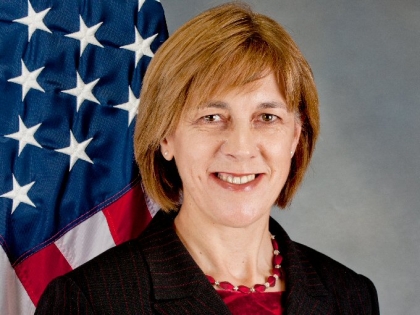
DAILY FREEMAN: Sen. Tkaczyk calls on state to stop NYC’s muddy discharges from Ashokan Reservoir into Lower Esopus Creek
By William J. Kemble
08/04/14
State Sen. Cecilia Tkaczyk wants the state Department of Environmental Conservation to put end to New York City’s muddy water discharges from the Ashokan Reservoir into the Lower Esopus Creek.
“These discharges are polluting the [creek],” Tkaczyk, D-Duanesburg, said in a statement issued Monday. “And they are having a negative impact on the quality of life for many Ulster County residents. It is up to New York City to remediate these problems if they want to continue to use the Ashokan Reservoir without building a filtration system.”
The city, at times, discharges turbid, muddy water from the reservoir into the 32-mile creek to prevent it from reaching drinking water customers downstate. The process also spares the city the cost of building a water filtration plant for its upstate supply but, critics say, harms the creek, its wildlife and its shoreline.
Tkaczyk, who’s running for re-election this fall, issued her statement just 18 days before the state’s Aug. 22 deadline for public input about what should be included in a scoping document that will compel the New York City Department of Environmental Protection to evaluate how its handling of the reservoir has impacted downstream communities.
The scoping document is part of the process under which the state is being asked to renew the city’s “pollutant discharge elimination system permit.”
Until now, the city has not been required to consider the impact of the muddy discharges on either the Lower Esopus Creek or the Hudson River, into which the creek spills at Saugerties. Nevertheless, the city has the state’s permission to discharge up to 600 million gallons per day of turbid water from the Ashokan’s west basin and another 400 million gallons per day from the east basin.
Tkaczyk, in written comments to state environmental officials, said the process of conducting environmental reviews after permission is granted strikes her as being in violation of state laws.
“I must state my concern that it appears that this (pollutant discharge) permit application process is rather unusual, as it is an effort to obtain validation of a massive discharge regimen that has already been occurring for years,” she wrote.
Tkaczyk said the discharges contribute to downstream flooding and send “tons of pollutants” into the creek.
The discharges are “affecting local farmers, who are reporting that their irrigation equipment is clogging because of the mud in the water,” she said. “It’s also affecting fishing and the natural beauty of the [creek], which is hurting tourism and recreation.
“It is essential that the DEC require the New York City Department of Environmental Protection to outline all reasonable alternatives to the current release plans and proposals,” she wrote.
City officials were not immediately available for comment on Monday.
Comments regarding the city’s request for renews “pollutant discharge elimination system permit” may be emailed to ashokan@gw.state.ny.us or mailed to NYSDEC Central Office, Division of Environmental Permits, Attention: Stephen Tomasik, project manager, 625 Broadway, 4th Floor, Albany, N.Y. 12233-1750. The deadline is Aug. 22.

